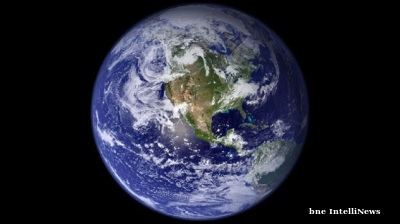Central, Eastern and Southeast Europe are expected to weather the fallout from renewed US trade tensions under President Donald Trump with limited damage, according to the latest economic forecast from the Vienna Institute for International Economic Studies (wiiw).
While much of the developed world braces for slower growth as the US-China trade war deepens, the region’s economies are projected to remain resilient, particularly those with strong domestic markets such as Poland.
According to the wiiw’s Spring Forecast, average GDP growth for the EU member states in the region is expected at 2.5% in 2025, dipping slightly from earlier projections, but still significantly outpacing the euro area’s estimated 0.7% growth. The growth gap is expected to persist into 2026, with the region forecast to expand by 2.8%, compared to 1.4% in the eurozone.
Poland, with its large internal market and resilient consumer spending, is set to lead the eastern EU economies, maintaining 3.5% growth in both 2025 and 2026. Croatia follows with 2.8% projected growth in each year.
Meanwhile, the Western Balkans are also forecast to outperform the EU average, with growth expected to accelerate in 2026. Kosovo and Albania in particular are seen as among the fastest growing economies in the broader region this year, outstripped only by Kazakhstan, with Montenegro and Serbia not far behind.
Turkey is also expected to achieve stronger growth than all the region’s EU members except Turkey this year, and to see an acceleration in growth in 2026 and 2027.
The main channel through which the ongoing trade war is set to affect Central, Eastern and Southeast Europe is via the slowdown in Germany, Europe’s biggest economy and an important trading partner for many in Emerging Europe.
Germany’s manufacturing slowdown, exacerbated by Trump’s tariff hikes, remains a concern for export-oriented economies like Czechia, Slovakia, Hungary and Romania. However, rising real wages and robust private consumption are expected to keep these economies growing. Richard Grieveson, deputy director at wiiw and lead author of the spring forecast, says the impact will be manageable.
“The direct trade flows between those countries and the US are anyway low, and the collateral damage caused by their close ties with the heavily export-dependent German industry is also likely to remain manageable,” said Richard Grieveson, deputy director at wiiw and lead author of the spring forecast.
“As in previous cases where the region has been hit by negative external shocks, those countries with larger domestic markets – most notably Poland – will be better able to absorb the negative impact and are likely once again to prove resilient,” he added.
Moreover, Grieveson forecast that the adverse impact of Trump’s tariffs is expected to be mostly counterbalanced next year by Germany’s shift in fiscal policy, which includes a €500 billion investment plan focused on defence, infrastructure and climate initiatives.
He does, however, add that it is "not yet really possible to predict how the general uncertainty will affect consumption or investment, even though the region has repeatedly shown itself to be very resilient to external shocks”.
In contrast to Europe’s mixed outlook, Russia may see tangible benefits from Washington’s shifting stance. The report points to warming ties between the US and Russia, which could lead to a rollback of sanctions and new avenues for economic cooperation.
Russia’s GDP is projected to grow 2% in 2025 and 2.5% in 2026, the latter representing a sharp upward revision. The possible lifting of sanctions and revived foreign investment could offset a drop in wartime-related government spending and a recent dip in oil prices.
“Looking ahead, the prospect of a partial or complete lifting of US sanctions as part of the rapprochement with Washington is expected to improve the economic outlook significantly,” the report says.
‘Should there actually be a ceasefire or peace agreement in Ukraine, Russia’s economic ostracisation by the US will probably end,” commented Vasily Astrov, Russia expert at wiiw.
“It is even feasible that this will happen without an agreement. That would allow US capital and American technology to flow back into the country.”
Such a shift would pave the way for a return of US capital and technology, with Asian allies like Japan and South Korea potentially following suit, according to Astros.
Meanwhile, Ukraine’s economic prospects remain highly uncertain. The country’s growth is forecast at 3% in 2025 and 4% in 2026, but only if external military and financial support continues. The Trump administration’s wavering support and attempts at a hasty peace deal could undermine that.
“At the moment, it doesn’t look as if Trump will be able to convince Russian President Putin to end the war of aggression against Ukraine. If Trump then turns away in frustration and leaves Ukraine to its fate, that could once again shake the economy of Central Eastern Europe,” said Grieveson.
Ukraine continues to suffer from the destruction of infrastructure, mass emigration, and inflation driven by wage increases and rising prices. The National Bank of Ukraine has already hiked interest rates to 15.5% to contain inflation.
“Trump’s attempts to force Ukraine into de facto capitulation and to turn the country into an economic colony of the US are the biggest threat to Ukraine’s economic development,” said Olga Pindyuk, wiiw’s Ukraine expert. “The decisive factor will therefore be whether the EU succeeds in stepping up its military and financial aid to Ukraine and in replacing the US as the country’s most important supporter.”
Features

Indonesia’s $80bn giant seawall
Indonesia’s ambition to build a colossal seawall along the northern coastline of Java has ignited both hope and heated debate. Valued at around $80bn, the project aims to safeguard the island’s coastal cities from tidal floods and erosion.

The Asian nations backing the Russian war effort – from India to Taiwan, China to Indonesia
While many Asian nations have quietly distanced themselves from Moscow in a bid to fall into line with US or European allies, several continue to engage with Russia, providing varying degrees of support that help sustain its military campaign.

The EU needs to change to stay geopolitically relevant
Leading EU figures are pushing for the unanimity rule used to make important decisions to be dropped to enable faster enlargement — one of the bloc’s main tools for geopolitical influence.

BEYOND THE BOSPORUS: Prosecutors make move on “fictitious export schemes” of Istanbul Gold Refinery
Observers point to intra-regime gangs seizing each other’s wealth, remember Erdogan’s “Hello Fatih” phone calls and ponder whether wanted man Turgay Ciner is in London.


